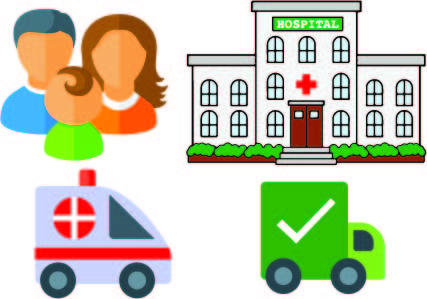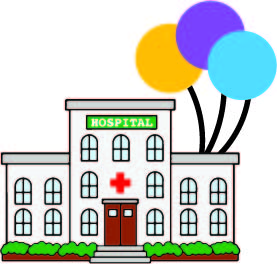Lessons Learned on a Project Journey

Tackling a hospital activation or transition project can seem like a moving target, so I reexamined my processes to understand which lessons had the highest value for creating project success and found a common theme: well managed expectations and prepared staff promote uneventful transitions. To no surprise, implementation of project management basics lies at the core of project success. The journey uncovered the following challenges and opportunities associated with my project experience.
By: Melanie Viquez
Review Scope and Goals of the Project

The scope of a transition planning and activation project includes basic occupancy, fit-up, and a relocation; and more frequently, elaborate training, simulation, and patient moves. While this trend of the latter is valuable to staff and patients, the depth of each will depend on time, resources, and available budget. The subjective nature of training and orientation amplifies the value of well-defined project requirements, and setting goals is an important step to managing the expectations of the organization. When determining the training goals, one must review time and resources in conjunction with operational priorities. Goals outside project requirements and beyond the project timeline can be considered during post transition. A team discussion to prioritize the goals will also provide focus and direction to resources. Once the goals are set, keep them at the center of meetings to maintain transparency and as a motivation for project success.
Create a Flexible Plan, Don’t Be Paralyzed by Risk

The “best-made plans often change.” Therefore, when developing a plan, be proactive about identifying the risk, encourage feedback, and remain nimble to potential changes. Balancing priorities and resources are key to reaching the goals. If a plan is too rigid, project’s momentum may be affected. If it is poorly defined or communicated, time on the schedule may be compromised. Teams must be comfortable with decision-making and some ambiguity that comes with transition. A well-managed project embraces flexibility and is responsive when requirements change, team members leave, or a deadline shifts. Sometimes, changes are challenges that deliver opportunities for better outcomes. Instead, encourage progress by implementing a simple process to review, document, and communicate changes: not on making the perfect plan.
Focus on the Critical Tasks and Project Priorities

Months prior to opening, timelines from construction, architecture, and vendors are aligned in an integrated transition schedule. The schedule is based on dependent key milestones and tasks, and it is evaluated for impact on operational readiness. Prioritizing critical tasks in advance and understanding that not everything is of equal importance, is an important step in the development of the plan. These agreed upon milestones help the team leader facilitate progress and provide rally points for the team efforts. Throughout this dynamic process, be mindful of potential new operational initiatives or scope creep. Construction projects can seem like an opportunity to start new initiative; so, take time to evaluate good intentions against feasibility. Focus on project priorities and leverage the critical activities list.
Be Deliberate About Team Communication

Managing the expectations and coordinating stakeholder efforts requires regular attention. Begin communication early and often. Communication is often cited as the number one reason projects fail, so take a proactive approach. David Allen, productivity guru and author of “Getting Things Done”, says that there are really only five reasons to have a meeting: “give information, get information, produce options, make decisions, and to assign tasks.” In the world of virtual calls, keeping the attention of a team or reading the engagement through the screen is an added challenge. Therefore, it is paramount for those facilitating to include a focused agenda, to keep the meeting on point, and to gauge the attention of the group on the call. Staff time is the most precious resource. Learning how to meet to discuss progress and confront current challenges helps them work better together when faced with project challenges.
Take Time to Practice

The one piece of feedback I consistently received is how valuable it was to practice new workflows and “what if” situations. Conducting operational simulations before the building is open to patients provides a safe environment to test the new future state spaces and assumptions. The challenge is to stand firm on the future design principles and to move away from “how it has always worked in the past”. Flexibility is key in planning the design and resources. Budgets, technology, and reforms guide decisions and impact change to future workflow. However, when designed with an understanding of the function, the space may support the evolving practices and processes. Simulation of future state is also a good way of testing, analyzing, and evaluating the best way to move forward. Medication and supply distribution, emergency responses, and new technology that will replace a process are good places to start, and if there is a patient move, a mock move with an event should also be considered. Documentation and feedback after each simulation is also recommended. The goal is not to fix all problems before the move, but to be better prepared for as many “what if” situations as possible.
Team Motivation Ensures Project Success

One of the best project experiences I’ve had was with a team leader who understood how to motivate and elevate a team to ensure project success. The approach had three simple steps:
1. Keep the goals of the project front and center. Well-defined expectations and communicated priorities provide transparency and purpose to a project.
2. Encourage candid routine team discussions to address issues and mediate risk. Incorporating tools such as team checklists to guide these discussions helps to maintain project alignment.
3. Acknowledge team accomplishment. Recognizing when the team has reached significant milestones keeps individuals performing at their best. Applying these simple steps builds confidence and signals to other individuals the gratitude of performing at their best.
Anxiety Relieved by Good Planning

After months of careful planning, the project comes to an end with the culmination of clinical staff, hospital leadership, physicians, and consultants working in step to execute the project plan. A non-eventful transition or activation is the best complement. No task is left undone or minor detail left to chance. Anxiety cannot be avoided; however, it can be minimized by thoughtful leadership, informed teams, and clear direction.


Leave a Reply
Want to join the discussion?Feel free to contribute!